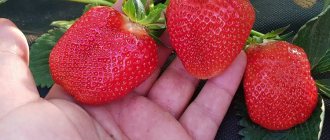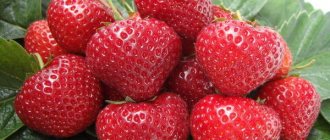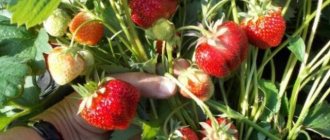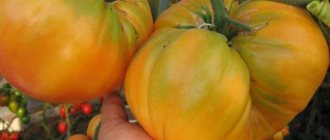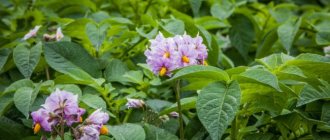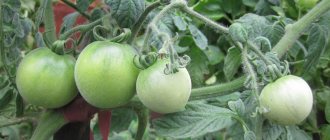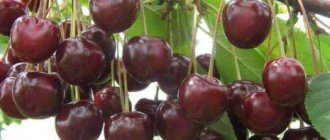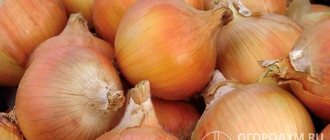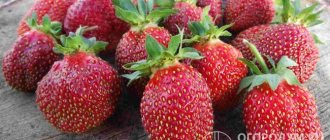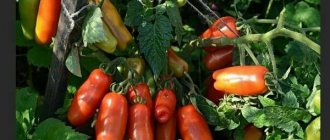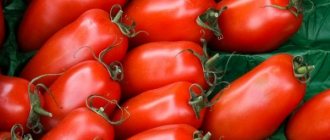One of the most vivid summer experiences is the joy of eating strawberries. Some will be able to eat from their own garden, while others will need to go to the store or market. It is not for nothing that this berry is considered one of the most romantic and associated with the holiday. At the same time, few ordinary consumers think about the variety that ends up on the table.
Garden strawberries, or strawberries, are one of the most popular crops to grow. However, any farm or small gardener is faced with the question of choosing a specific variety. One of the possible options is Selva strawberries, which are widely used due to their varietal characteristics.
Planting strawberries
The site for planting is chosen to be sunny. Since the Selva strawberry does not like stagnant water, it is planted only in well-drained soil.
It is very important that the soil is soft, aerated and permeable. If there is no such area, you can arrange a high bed for strawberries or grow them in boxes with drainage holes
Since the Selva strawberry does not like stagnant water, it is planted only in well-drained soil.
The soil should be low acidity or neutral. The ideal option is sandstone or loam. When digging up an area for planting strawberries, potassium sulfate (30 g/m2), superphosphate (50 g/m2), and humus (1 bucket/m2) are added to the soil. It is advisable to plant Selva strawberries in the spring; in the fall, they may not take root. The planting time is selected according to the weather, the main thing is that the soil has time to warm up to +18 degrees.
Important! Selva strawberries can be grown not only in open ground or greenhouses. It is often planted in hanging flowerpots, pyramids, multi-tiered boxes, which are placed on the sunny side of the site so that they are fully illuminated
This type of cultivation saves space on the site!
Planting is carried out with a distance of 25-30 cm between bushes and a row spacing of 60 cm
For planting, it is important to choose only strong rosettes from a healthy mother bush. Planting is carried out with a distance of 25-30 cm between bushes and a row spacing of 60 cm
The bushes are placed in dug holes, then the roots are covered with soil so that the base of the rosette rises back with soil (you cannot fill it up, otherwise the plant will rot). After planting, watering is carried out. Mulching is also recommended so that the bushes have protection from possible night cold snaps. As soon as the bush takes root, it will begin to produce flower stalks.
Selecting a location and preparing the soil for planting
As already mentioned, Selva strawberries are very sensitive to agricultural practices. Growing and caring for it requires some effort, but the result is worth it. For planting on the site, choose a sunny, well-lit place, since the berry is thermophilic. Low and excessively humid places are not suitable, since in this case it will take a long time to ripen and will become unflavoured. A large harvest can be obtained if Selva strawberries grow on loamy soil.
The planting area is dug up to a depth of 25-30 centimeters. The soil is well loosened, saturating it with oxygen. Then a mixture of manure and peat is added, about 10 kilograms per square meter. You can also add nitrogen-phosphorus fertilizer and dolomite flour, which reduces acidity. It is strictly not recommended to use chlorine as a fertilizer.
Berries
Selva bears fruit with bright, large, dark red berries with shiny skin. The flesh is almost crispy, and the degree of firmness increases the closer to autumn. The berries have a round-conical shape, their weight ranges from 20 to 60 grams. The berries taste sweet, slightly sour, with a characteristic wild strawberry aroma.
Selva berry belongs to the dessert varieties. It is very productive; in the first harvest it produces large berries, in subsequent harvests smaller ones, but their number increases significantly due to the formation of new bushes - rosettes. After all, the newly formed bushes also bear fruit, increasing the yield significantly.
The color of the berry ranges from pink to red, the seeds are small. The berry tastes sweet and sour; not everyone will like it, but lovers of sour things will definitely appreciate it.
Another good property of the variety is its ability to be transported. For commercial purposes, this variety is more than suitable. Gives abundant harvests, does not deteriorate during transportation and is well stored.
If the winter is harsh, before insulation it is necessary to carry out a hardening procedure, allow the strawberries to endure light frosts so that they adapt to frosts. Afterwards, the beds are mulched and the bushes are sprinkled with peat.
You cannot cut the foliage, as it also warms the roots. Based on reviews of Selva strawberries, it can be judged that with good shelter, the strawberries tolerated fairly severe frosts.
The only danger in winter, strange as it may seem, is a thaw. If the thaw lasts for a long time, a large amount of melt water may appear in the garden bed, which can lead to rotting.
Landing
If the planting site is not flat, then it is better to plan the bed on the south or west side. Obviously, this arrangement reduces the exposure of strawberries to cold winds, and the harvest will be better.
The acidity of the soil is better to be neutral or slightly acidic. As with any strawberry, sandy and loamy soils are most suitable.
Land preparation is accompanied by loosening and fertilizing with organic mixtures. According to the composition of substances per square meter, 30 g of potassium sulfate and 50 g of superphosphate are required.
Seedlings need to be watered immediately after planting, and so on every day for a week, and possibly more until the bushes are completely established. It is better to water by drip or carefully ensure that water does not get on the foliage.
If there is no drip irrigation system, you can use improvised means. Take a plastic bottle, insert the neck into the ground near the bush, the bottom moves, and the bottle is filled with water. So the strawberry itself, as needed, draws in the right amount of moisture.
From the description of selva strawberries, it is known that the foliage of the bushes is luxurious and green all season long. This is due to the fact that the variety is resistant to spotting, gray rot and more. This strawberry is generally not prone to diseases and is resistant to pests.
If suddenly one of the pests is found in a strawberry bed: strawberry mite, raspberry-strawberry weevil and nettle-leaf or nematode, it is necessary to immediately take measures to destroy them.
Considering that this variety constantly blooms and bears fruit, the use of chemicals is not reasonable. Planting flowers among rows of strawberries such as marigolds and calendula will repel harmful insects with their aroma.
The berry ripens constantly, the selva strawberry is remontant, so it needs a lot of light. Shaded places for planting are not suitable.
The variety is also afraid of windy places. It is better to plan a strawberry meadow on a hill or where the soil is not prone to swampiness. Otherwise, the roots may begin to rot and the strawberries will die.
- all summer and even part of autumn you can enjoy delicious berries, a bountiful harvest for the whole season;
- externally, the berries are beautiful and appetizing, as can be seen in the photo of Selva strawberries, retain their integrity for a long time;
- during the growing season 3 waves of harvest or more;
- tolerates transportation well, is stored for a relatively long time, maintaining its original appearance;
- this variety is not afraid of pests and diseases; ordinary care measures are enough to avoid diseases;
- tolerates even harsh winters;
- The berries are classified as large, weighing on average about 50 g.
For many gardeners, it can be a serious disadvantage that in one place strawberries produce a harvest for a maximum of 2 years, express themselves very quickly and require renewal.
But this minus is immediately compensated by the fact that strawberries reproduce well and produce a sufficient number of strong rosettes to renew the garden bed. Rosettes appear immediately on young rooted bushes, and bear fruit the same year.
Protection from diseases
Despite the fact that Selva is immune to many diseases, do not forget about protecting the plant. While growing bushes, you need to monitor them in order to promptly identify pests. Strawberries are especially susceptible to attack by strawberry mites and weevils.
READ MORE: Sphinx rose variety description and characteristics, planting and care rules
Despite the fact that the variety is considered resistant to diseases, they may appear under unfavorable weather conditions. The most common are powdery mildew, gray rot, black rot, brown, brown, and white spotting. When the first symptoms of plant damage are detected, they should be immediately treated with appropriate preparations.
Sometimes strawberries are affected by insect pests, such as raspberry weevils, strawberry mites, spider mites, strawberry nematodes, wireworms, slugs, snails, woodlice, and centipedes. When attacked by insects, the bush begins to wither, mechanical damage appears on the leaves and tendrils.
Some of the pests are capable of completely destroying the crop. There are treatment methods that are used as preventive measures. If there is a need to use chemicals during fruiting, then such berries can be eaten only two weeks after spraying.
It is important for gardeners to know about the plant’s susceptibility to diseases and pests. The Selva variety is resistant to diseases associated with the root system and leaves. However, the plant’s resistance to gray rot remains at an average level. Gray rot can appear as a result of waterlogging of the soil, when planting in a shaded place, or when the berries come into contact with the soil.
If the disease does attack, the infected parts of the plant should be removed and treated with fungicides. Spider mites and strawberry mites rarely infect strawberry plants. If pests do appear, you need to remove the infected leaves. For prevention, treat with Karbofos or onion decoction.
To combat aphids, you can use a solution of laundry soap. Insects can also be removed manually. To protect the plant from the strawberry-raspberry weevil, seedlings should be planted near onion and garlic crops.
Growing and care
Altess garden strawberries do not require special agrotechnical techniques, but even without proper care, remontant varieties do not show good results.
Watering
Within 10-15 days after planting, young plants need daily irrigation. Then watering should be regular but moderate. Overmoistening will have a bad effect on the quality of the crop; gray rot may develop on the fruits. It is advisable to organize drip irrigation. If watering is done from a watering can, then you need to direct the water to the root and water with warm, settled water. The frequency of watering in dry, hot weather is every 3-4 days. An alternative method of watering is to water in furrows. Along the row (about 30 cm from the center of the bushes) a shallow trench is dug into which water is poured.
Loosening, weed control
A dense earthen crust has a bad effect on the health of the plant. To avoid this, every 3-4 days the beds are loosened to a depth of 3-4 cm. Deeper loosening can lead to damage to the surface root system of Altessa. Mulching with straw or planting strawberries on black agrofibre will help you avoid this time-consuming procedure.
Weeds take away nutrients and block sunlight. You won’t be able to get a good strawberry harvest in overgrown beds. Weeds must be controlled throughout the season.
Removing a mustache
In the first year, Altess produces almost no whiskers. In the future, they are left only on the mother bushes. The rest are removed in a timely manner, otherwise productivity will decrease.
Top dressing
Activities for feeding strawberries are divided into several stages:
- In early spring, you need to enrich the soil with nitrogen fertilizers to stimulate the growth of the bush. Cow pat is softened in water, 0.5 l. the mixture is diluted in 5 liters. water. 1 liter is spent on each plant. fertilizers
- In early May, potassium feeding is required for the growth of flower stalks. At 10 l. dilute a teaspoon of potassium nitrate with water. 0.5 liters should be used per plant. solution.
- At the end of the first wave of fruiting, the plant is restored with nettle infusion - 1.5 liters. on the bush. Yeast feeding increases productivity. 5 g of yeast (dry or live) and a tablespoon of sugar are diluted in 0.5 liters. water. After 3 hours, add water to 20 liters. and water the beds at the rate of 0.5 liters. per plant.
- At the end of the season, strawberries are fed with urea, which promotes the formation of flower stalks for the next season. 15 g fertilizer is diluted in 5 liters. water.
Pest and disease control
The variety is positioned as resistant to root rot, spotting, and gray rot. However, during an unfavorable rainy season, strawberries may suffer from fungal diseases and pests. To avoid the use of chemicals, use harmless folk remedies for treatment and prevention:
- If there is a threat of powdery mildew, treat the bushes with whey every 3 days (1 liter mixed with 10 liters of water). You can use kefir or yogurt.
- For the treatment of gray rot 10 ml. iodine alcohol tincture is diluted in 10 liters. water. Spraying with this solution is carried out 2-3 times.
- To prevent the invasion of harmful insects during the process of setting buds, plants are sprayed with a mixture of 200 g of mustard powder and a grated piece of laundry soap, diluted in 10 liters. water.
- Repel pests with tobacco leaf powder. You can infuse it in water and spray it on strawberries or scatter it between the bushes.
A classic preventative against diseases is 1% Bordeaux mixture. Strawberries are treated with this solution in early spring and late autumn.
Preparing for winter
Altesse strawberries are not covered only in the southern regions. In central Russia and in the northern regions, beds are covered with a thick layer of mulch for the winter. It can be straw, foliage, compost, pine spruce branches.
Reviews from gardeners
Winter-hardy, resistant to diseases and pests, the remontant strawberry variety Selva with large, beautiful berries is a good choice for growing in central Russia and further north. What are the features of caring for it? What are the possible disadvantages?
The Selva variety is an American selection based on three varieties: Brighton, Tufts and Pajero. The bushes are tall, have large leaves and powerful peduncles that can bear large fruits. The flower stalks are noticeably pubescent, rise high above the bush and produce a large number of berries. It also forms a large number of whiskers.
Interesting! Numerous tendrils allow the variety to be grown on trellises.
Due to the large size and heaviness of the berries, up to 1 kg of fruit or even more can be collected from one bush. Remontant variety - bears fruit from May-June until the first frost.
- The berries are large, weighing 30-60g, dark red, dense consistency, juicy. The surface is shiny.
- The taste is more sweet and sour than sweet, especially the first harvest.
Some note the similarity of taste with wild strawberries. - The aroma is subtle, not pronounced.
- Due to their density, they are minimally damaged during transportation and storage, and have an attractive appearance.
Reproduction
The optimal material for planting is mustache. The germination rate of the seeds is low and the seedlings are weak.
Landing
The basic rules for planting and care are basically the same as for other varieties of strawberries:
- Choose a sunny, wind-protected area, preferably elevated above the ground. Gardeners say: “Strawberries love a hillock.” The berries of plants planted in lowlands do not gain sweetness. This is especially true for Selva, since the berries are initially not very sweet.
- But you can’t plant on a steep slope either! The site should be slightly elevated or have a slope of 2-3°, preferably to the southwest.
- Since Selva is a remontant variety, it is preferable to plant it in the spring - in April-May, and in the southern regions - from the beginning of March. However, in the first year, during spring planting, the harvest will be small.
- If you decide to plant strawberries in the spring, wait until the soil temperature reaches 10°C.
- Autumn planting is carried out from late August to November, depending on the onset of frost in the region.
- As a rule, the more time a plant has to get stronger before frost, the larger the harvest the following year. However, in the southern regions at the end of August and beginning of September it is still too hot for planting. Wait until the heat subsides!
- The most suitable soil type is loamy or sandy loam, neutral or slightly acidic.
- The best predecessors of strawberries on the site: onions, carrots, greens, beets, radishes.
- Solanaceae, cabbage, cucumbers, asters, lilies are not very suitable - possible reserves of nematodes and fusarium pathogens.
Site preparation
In the fall for planting next spring:
- dig up the area with a bayonet;
- remove weeds;
- Apply organic and/or mineral fertilizers at an approximate rate of 8-10 kg per 1 m2 of soil.
In the spring, all that remains is to loosen the top layer of soil and start planting.
If you don’t want to manually remove weeds, you can try 3-4 weeks before sowing, digging up the area and covering it with agrofibre (Spunbond). During this period, the weeds should die in the dark. After this, the agrofibre can be left for the entire growing season and plants can be planted by making cross-shaped cuts in it at a distance of 30 cm from each other and making holes for planting directly through them.
Process
- We make holes approximately 25 cm deep, at a distance of at least 30 cm, and preferably 40-50 cm from each other due to the long mustache. The distance between the ridges is from 40 to 60 cm.
- If the strawberry bed was not fertilized in the fall, we add fertilizer to the holes, for example, the following: 2 cups of ash per bucket of soil, a bucket of compost and a bucket of rotted manure.
- An hour before planting, water the seedlings.
We pour soil into the bottom of the prepared holes and form a mound, about 10 cm high. Carefully remove the plant from the pot and distribute the roots so that they evenly go down the mound. Carefully cover with soil and water generously, at the rate of approximately 0.5 liters of water for each seedling.
IMPORTANT! Make sure that the apical bud of the bush (heart) protrudes a LITTLE BIT above the soil surface: if it protrudes too high, it may dry out, and if it is buried, it will rot.
Despite the variety's resistance to diseases and pests, some gardeners recommend rinsing the rosettes in a solution of the following composition before planting: 3 tablespoons of table salt, a teaspoon of copper sulfate per 10 liters of water. Leave the socket in the solution for 10-15 minutes, then rinse well with warm water.
Mulching
Covering the soil between strawberry bushes is very desirable. This will make it possible to water the plants less frequently, avoid weeding and minimize contamination and damage to the berries.
For mulching, you can use agrofibre, completely covering the bed with it and making holes for planting, as mentioned above.
By the way, the English word Strawberry is literally translated as “straw berry”, precisely because of the traditional practice of mulching with straw. The main thing is not to cover the plants themselves with mulch. Dried sawdust, crushed bark or even pine needles are also suitable as mulch, but they should be sprinkled in a slightly smaller layer - up to 7 cm.
For the first 2 weeks after planting, seedlings are watered every day, and even 2-3 times a day. For mature bushes, from the end of April to July - three waterings per month, August-September - two are enough, unless August in your region is too hot.
Important! Too frequent and small waterings are harmful; it is better to water rarely and abundantly.
- The most suitable time is early morning hours.
- The approximate norm is 10-12 liters per 1m2.
- A very good way is drip irrigation, in which water is supplied to each bush through special tubes. If this is not possible, we use the traditional method, only remember that, firstly, the water should not be cold or, on the contrary, hot, and secondly, after flowering, the water should not get on the leaves, flowers and developing fruits.
READ MORE: Winter Scythian garlic description and characteristics of the variety, cultivation with photos
The Selva variety is winter-hardy enough for central Russia, but in colder regions it will have to be covered. After the snow melts, we remove the cover, inspect the plants, remove diseased and damaged ones, and loosen the soil. During return frosts, we cover the bushes with the same agrofibre. During the same period, you can carry out preventive spraying with 1% Bordeaux mixture.
If your strawberries are already 2 years old, in early spring, before the first leaves bloom, add the first fertilizer, which must contain nitrogen, for example, 1 tbsp. nitroammophoska per 10 liters of water, 1 liter per bush;
On a note! Plants in their first year of life do not need to be fertilized; the fertilizer applied during planting is enough for them.
Have the strawberries started to grow? Now is the time to mulch with straw, sawdust or other materials. As soon as massive foliage growth begins, we carry out a second preventive treatment against diseases and pests. If the weather is dry, do not forget about regular watering.
May is the time to throw out the mustache. Selva actively forms them, therefore, if you do not need the whiskers for propagation or growing on a trellis, remove them so that they do not take away from the plant the energy necessary to form a crop. By the way, you can expect the first wave of the harvest already at the end of May.
The first harvest has been harvested, and re-fruiting flower stalks are beginning to form. To support them, you can add mullein, diluted 1:10, 0.5 liters per 1 m2 or complex mineral fertilizer.
July August
We continue to water and feed between fruitings, if possible alternating fertilizing with organic matter and fertilizing with mineral fertilizers.
September
We are collecting the last harvest and removing the mulch, which has already become quite worn out over the season. We apply autumn fertilizing, for example, with the following composition: 1 part mullein to 10 parts water, 0.5 cups of ash, 0.25-0.5 liters per bush.
October November
In October-November, and if there are early frosts in your region, then earlier, we cut off the old leaves. Some even recommend cutting off all the leaves from the bush. To reduce freezing, mulch again. For snowy and warm winters, additional shelter is not required, but if the winters are frosty and with little snow, we cover it, for which spruce branches or the same agrofibre are best suited.
Important! Like other remontant varieties, the lifespan of the Selva variety is short - two, maximum three years, then the plantation needs to be renewed.
The variety has complex resistance to most strawberry diseases. The only disease for which resistance is average is gray rot.
If a coating of gray rot does appear on the leaves or berries, the infected plants are removed, the rest will have to be treated with fungicides, for example, Alirin-B. This is a biological fungicide; it can also be used to treat berries.
Attention! Chemical fungicides cannot be used during flowering and fruiting!
Possible pests:
- Spider mite. If you notice a cobwebby coating on the flower stalks or leaves, it may be a spider mite. Pick off the affected leaves; you can wash the plant with onion broth or treat it with karbofos.
- Strawberry mite. Disinfecting seedlings with the same karbofos helps - immerse the plant in the emulsion for a few seconds. Except the root!
- Aphid. A solution of laundry soap and manual removal of insects is the best alternative to chemical insecticides, which also destroy beneficial insects.
- The strawberry-raspberry weevil is afraid of the smell of onions and garlic. You can plant these plants near strawberries or treat them with solutions of garlic or onion
- Nematode. Prevention only! Carefully inspect the seedlings; before planting, you can treat them with a solution of parathion or fosdrine; plant marigolds or calendula next to the strawberry beds, which repel nematodes. Infected plants are destroyed; it will be impossible to plant strawberries in this area in the coming years!
Reviews about Selva strawberries from gardeners are varied. Many note good yield, pleasant taste and ease of care. Even from a small plot you can get a big harvest. The berries do not lose their taste even during heat treatment, for example when preparing jam, compote or desserts.
Planting strawberries
The site for planting is chosen to be sunny. Since the Selva strawberry does not like stagnant water, it is planted only in well-drained soil.
It is very important that the soil is soft, aerated and permeable. If there is no such area, you can arrange a high bed for strawberries or grow them in boxes with drainage holes
Since the Selva strawberry does not like stagnant water, it is planted only in well-drained soil.
The soil should be low acidity or neutral. The ideal option is sandstone or loam. When digging up an area for planting strawberries, potassium sulfate (30 g/m2), superphosphate (50 g/m2), and humus (1 bucket/m2) are added to the soil. It is advisable to plant Selva strawberries in the spring; in the fall, they may not take root. The planting time is selected according to the weather, the main thing is that the soil has time to warm up to +18 degrees.
Important! Selva strawberries can be grown not only in open ground or greenhouses. It is often planted in hanging flowerpots, pyramids, multi-tiered boxes, which are placed on the sunny side of the site so that they are fully illuminated
This type of cultivation saves space on the site!
Planting is carried out with a distance of 25-30 cm between bushes and a row spacing of 60 cm
For planting, it is important to choose only strong rosettes from a healthy mother bush. Planting is carried out with a distance of 25-30 cm between bushes and a row spacing of 60 cm
The bushes are placed in dug holes, then the roots are covered with soil so that the base of the rosette rises back with soil (you cannot fill it up, otherwise the plant will rot). After planting, watering is carried out. Mulching is also recommended so that the bushes have protection from possible night cold snaps. As soon as the bush takes root, it will begin to produce flower stalks.
Caring for strawberry bushes
In order for the Selva strawberry to bear fruit well and its taste to be at its best, you should devote a little time to caring for it. Its main component is watering. To do this, several liters of water are poured under each bush once a week. In hot weather, you can water more often, the main thing is that the soil around the seedling does not dry out. It is important to remember that the water should be at room temperature in order not to damage the root system due to a sudden temperature change.
To prevent dry soil around the rhizome, gardeners use mulch. To do this, a bunch of mown grass, hay or straw is placed under each bush to retain moisture.
Another necessary maintenance measure is loosening the soil. It is carried out to a shallow depth so as not to damage the root system.
Several times a year you need to fertilize - during the flowering period, formation and ripening of fruits. It is recommended to use mineral fertilizers - superphosphates, potassium sulfate, as well as organic fertilizers - humus and manure. All components are mixed, diluted with water if necessary and applied individually to each bush.
When preparing plants for wintering, the leaves are cut off at the root. Then the strawberry bushes need to be covered with plastic wrap and sprinkled with sand. These measures will ensure the safety of plants at low temperatures.
The best varieties of large-fruited garden strawberries
First of all, summer residents are attracted by large-fruited strawberries without whiskers, the berries of which grow weighing over 30-40 grams. The stores offer dozens of varieties of domestic and foreign selection, but when choosing, you need to remember the climate characteristics of a particular area.
The characteristics stated in the descriptions show the variety in its natural conditions, but such strawberries may not be suitable for other climates
Therefore, they pay attention to the recommendations of agronomists, care features, and cold resistance indicators of Victoria for risky farming areas. The review will help you choose the most suitable species and take into account the specifics of the variety
"Queen Elizabeth"
Belongs to early strawberries, forms semi-double white flowers that completely cover the bushes. The berry is red, with a slight shine, weighing 30-50 grams. Individual specimens – 80-100 grams (see photo). According to tasters - 47 points out of 5 possible.
During the season, no more than 3-4 whiskers with 2-4 rosettes are formed. The main yield is 1.5-1.8 kg per bush, subject to proper care.
"Vima Rina"
Garden strawberries from the famous Dutch “Vima” series are part of the group of remontant species, without borers. Gives an early harvest, indicators are 0.8-1.3 kg per bush.
The berries are bright red in color, the taste is sweet with a subtle sourness. Fruiting occurs in “waves”, with 2-4 large harvests per season. Propagation is possible by seeds, as well as by dividing 2-3 year old bushes
"bolero"
A variety of English selection, resistant to natural disasters and adverse factors. It belongs to large-fruited varieties, the berries weigh 20-30 grams.
It has high immunity and bears fruit in one place for up to five years. Compact plants are convenient for planting in small areas.
"yoke"
With good care, it bears fruit up to 3-4 times a season. The bushes are lush, compact, well-leafed. Cone-shaped fruits are red-pink, with shine.
Whiskers do not form, which allows the variety to be grown in small areas in dense plantings. The fruits are suitable for transportation and retain an attractive presentation for a long time.
"merlan"
First generation F1 hybrid from Dutch breeders. Early garden strawberries form bushes up to 30-35 cm in height. Peduncles are dense, with bright pink flowers.
The beginning of flowering occurs in mid-spring (middle zone), at the end of May the first berries are collected. The fruits weigh 18-25 grams, scarlet-red, with a pronounced aroma and bright taste of strawberries. Collection from a bush - up to 1 kg.
"Pandora"
The minimum mustache is formed by the Pandora garden strawberry (Great Britain). Recommended for all regions, including areas of risky farming. It blooms in June and produces many oval-shaped berries. Weight – 45-60 grams. Pleasant taste, rich strawberry aroma, dense structure are the main characteristics of the fruit of the variety.
The variety is not remontant; it bears fruit once a season, but produces good yields. 500-600 grams are collected from a bush.
"Lubasha"
Domestic breeders gave summer residents an excellent variety of “Lyubasha”. Semi-spreading bushes do not produce tendrils and form strong, tall peduncles. The fruits are dense, regular in shape, rich red or purple in color. Weight – 20-25 grams.
Usage:
- Dessert;
- processing into compotes, preserves, jams;
- freezing
Strawberries are winter-hardy, do not reduce yield during slight cold snaps, and can withstand return frosts. Refers to remontant types of continuous fruiting.
Characteristics of the variety
Remontant garden strawberry "Selva" is characterized by the formation of fairly large and spreading bushes. The plants have large leaves located on relatively long petioles with pronounced pubescence. The peduncles are very powerful and located above the level of the leaves.
The berries are large or very large, red. The surface of the berry has a clearly visible, very characteristic shine. The pulp is tender, with a delicate aroma. Due to the high density of the pulp, high shelf life and good transportability of the harvested crop are observed. As a result of relatively long storage, ripe berries do not lose their shape and retain good taste.
The variety is characterized by resistance to diseases that affect the leaves and root system of strawberry bushes. Garden strawberries "Selva" have increased productivity potential and are capable of producing a crop on the current year's rosettes. In addition to excellent yield, the advantage of this variety is its resistance to major diseases.
Small-fruited beardless strawberries: choice for different regions
Varieties of garden strawberries with medium-sized berries have excellent taste. At the height of fruiting, fragrant berries shower the bushes, filling the air around with an incredible strawberry aroma.
"Alexandria"
Developed in the USA, it is known for its long-lasting fruit production.
Bushes with spreading flower stalks, tall and thin. The berries are conical, rich red in color with gloss, weigh 6-8 grams (for small-fruited varieties this is a lot of weight). The achenes are red, slightly depressed. There is a characteristic strawberry aroma. The approximate fruiting time is from early June to mid-October. 350-400 grams of berries are harvested from the plant per season.
"yellow miracle"
The yellow-golden berries of this strawberry look original against the background of green foliage. The variety is German, propagated by seeds or by dividing the bush, since there are no mustaches on the plant.
The berries are elongated, elliptical in shape, with golden achenes on the surface. They weigh no more than three grams. The taste is sweet, with a characteristic pineapple aftertaste and aroma. Since the fruits do not contain red pigment, they can be eaten even by allergy sufferers.
"Baron Solemacher"
A time-tested variety from Germany, it is famous for its excellent taste of berries with a bright strawberry aroma. Plants are small, well leafy. The leaves have serrated edges, light green with a silvery tint. Fruiting begins in the first year after planting, the highest yield is in 2-3 years. Transplantation – after 4 years.
The fruits are small, up to 3-4 grams in weight, bright red. They ripen in the middle zone in early June, bearing fruit until early September. In the southern regions, the last collections are in November.
"rügen"
Winter-hardy garden strawberries were bred many years ago in Germany. The bushes grow up to 18-20 cm, the peduncles are strong and erect. During the ripening period, the berries do not lie on the surface of the ground, they are always clean, and do not rot.
The fruits are small, up to 2.5-3 grams, scarlet-red in color. The tip of unripe berries is slightly whitish. The achenes are large and located on the surface. The taste is excellent, the flesh is dense and sugary.
Planting requires rejuvenation every three years. The variety is demanding on watering and soil fertility. With proper agricultural technology, it bears fruit until frost.
"Ali Baba"
These delicious garden strawberries are famous for their abundant harvests (up to 0.5-0.7 kg). The bushes are powerful and leafy. They bloom and bear fruit in the first season. During the flowering period, the plants are strewn with numerous white “caps” of inflorescences.
The berries are slightly elongated and resemble wild strawberries in shape. Weight – 6-8 grams, achenes are small. The skin color is bright red, the core is milky white with pink splashes. The bushes tolerate cold weather well and quickly adapt to different climatic conditions.
"Forest Tale"
According to reviews from those who grew this variety, it is very similar in taste and aroma to the berries of real wild strawberries. The name is one hundred percent justified. A medium-sized plant with tall peduncles and bright green foliage.
The fruits are dense, juicy, weighing no more than 6 grams. Color – red, shape – conical. The bushes bear fruit until autumn and do not form mustaches. Use - desserts, freezing, making jams.
"golden"
Golden bushes also do not form mustaches. This garden strawberry attracts with the unusual color of its fruits; they are creamy-yellow, weighing 9-11 grams. Plants reach 18-20 cm, the leaves are dark green, with teeth.
The berries are formed from June to mid-October. The taste is pleasant, sweet. Many summer residents note that small-fruited yellow-white varieties are superior in taste to their red-fruited “brothers.”
"ruyana"
Strawberries from Czech breeders, productive, easy to care for. The plants are compact, up to 18-20 cm high. Peduncles rise above the leaves, so the berries do not lie on the ground when ripe. The leaves are light green in color and shiny.
The first flowers appear at the end of May and continues until September. Fruiting is continuous, the berries are collected as they ripen throughout the summer season. The fruits are small, 5-7 grams, conical in shape. The dense berries taste sweet and aromatic. They are stored fresh without losing their presentation for 5-7 days.
By planting vineless garden strawberries on your plot, you can greatly simplify care while still getting a high yield of berries. You just need to remember about the mandatory rejuvenation of plantings and take care of obtaining crop seedlings in advance.
Advantages and disadvantages
Each berry variety has its own characteristics and characteristics.
- The advantages of the Selva variety include:
- increased productivity potential;
- large fruit;
- possibility of year-round cultivation at home;
- undemanding to climatic conditions;
- self-pollinating;
- winter hardiness;
- use for all types of processing;
- duration of fresh storage;
- fruiting from May until frost;
- possibility of transportation;
- resistance to diseases, except gray rot.
- The disadvantages of the Selva variety include:
- the need for regular propagation, division and transplantation of berry bushes to a new location;
- careful drip watering, without water getting on the berries and leaves;
- poor tolerance to high air temperatures.
Strawberry propagation
The description of the strawberry variety “selva” says that it is remontant and bears fruit all year round. During this period, the bushes are greatly depleted, and the likelihood of getting a good harvest next year is significantly reduced.
Therefore, it is important to propagate strawberry bushes annually.
This is done in the following ways:
- Dividing the mother bush - getting two or three from one seedling. This method is considered one of the best, since it preserves the characteristics of the variety.
- Propagation by seeds is a labor-intensive task, since you first need to extract them from the berries, then germinate them in a moist, warm place, and only then plant them in pots. You can transfer it to open ground when the seedlings have several true leaves.
- Propagation by mustache is the easiest way. To do this, you just need to sprinkle earth on one of the strawberry tendrils. After some time, it will take root and form a seedling, which will need to be separated from the main bush and replanted.
The nuance of this variety is that propagation must be done annually, and it is also advisable to periodically change the place where the strawberries grow.
Subtleties of plant care
Planting and proper care of the plant throughout its entire life cycle play an important role in growing Selva.
Air temperature
If strawberries grow at too hot air temperatures, the plant should be mulched with hay or straw. In the southern regions, it is better to keep bushes in partial shade. Covering the plant with film helps against cold temperatures.
At first, after planting, strawberries are watered several times a day. After the plant has taken root, the watering rate should be reduced, since excess moisture will negatively affect the taste and quality of the berries. It will be enough to water the bushes 1-2 times a week. After watering, loosen the soil to provide sufficient oxygen to the roots.
Fertilizers
Selva must be regularly fed with mineral and organic fertilizers during flowering and fruiting. Fertilize at least three times per season.
Mulching, that is, covering the soil between the bushes with various materials, will help minimize damage to the berries and make it possible to water the bushes less often than usual. Agrofibre, which is used to cover the bed before planting, as well as hay or straw, are suitable for this. Do not cover the bushes themselves with material; carefully cover the soil between the bushes with a 15-centimeter layer.
Wintering conditions
Selva tolerates cold well, so in warm regions it is enough to cover it with a layer of hay, straw or non-woven material. In regions with cold climates, the soil must be mulched and sprinkled with a thick layer of humus or peat.
Planted seedlings require attention and care. During the period of mass flowering, usually in the first days of June, the remontant Selva strawberry responds well to abundant watering. At this time, the main formation of buds occurs. It is necessary to promptly remove weeds around the bushes and loosen the soil.
An excessive number of whiskers can affect the size of the berries - their size will become smaller and smaller each time, and the taste will become sour, so some of the whiskers will have to be removed.
After 2 weeks after planting, watering should be reduced to once a week. This norm may change depending on weather conditions. To avoid waterlogging of the soil, it is preferable to use a drip irrigation system. If you use another method of watering, this may lead to erosion of the soil. The root system will be exposed, which will have a bad effect on the plant.
Important! Do not allow even the slightest drying out of the soil. Otherwise, crop loss can be significant.
Soil fertilization
Selva produces crops all season long, so in order to avoid soil depletion, the plant will need feeding. They are added during watering. Throughout the growing season, mineral fertilizers and organic matter are applied to the bushes.
Ingredients for feeding (per 10 liters of water):
- 10 g of saltpeter;
- 15 g potassium salt;
- 20 g superphosphate.
Plants of the second year of life need more feeding than the first.
Preparing for winter
One of the characteristics of the Selva variety is the frost resistance of the crop. However, there are some features when preparing for winter in different climatic zones.
For regions with mild winters:
- leaves need to be trimmed;
- cover the bushes with spruce branches, straw or non-woven material.
For regions with cold climates:
- Start hardening the plant before the onset of stable frosts, that is, do not cover it in advance, but let it gradually get used to changes in air temperature.
- The leaves do not need to be removed; they will serve as cover for the root system.
- Mulch the soil.
- Cover the ridges with a thick layer of humus or peat.
- Use agrofibre for shelter.
Botanical description and characteristics
Let's look at what Selva strawberries are and what important characteristics they have.
Dimensions and appearance of the bush
Selva is characterized by compact and not very spreading, but quite strong and durable bushes that reach a height of about 50 centimeters. The green color of the leaves is rich and expressive.
Flowering, pollinators and fruiting
At the bottom of the bush there are flower stalks, of which there are usually a lot. They have sufficient power, which protects them from sinking to the ground surface. A large number of buds are formed on the peduncles. The flowers are large in size and snow-white in color, they are bisexual. Subsequently, fruits appear that are firmly held on the stems.
When growing Selva strawberries in open ground, there are no problems with pollination. All it takes is wind and bees. To attract these insects, it is recommended to sprinkle honey water on the strawberry bed (1 liter of water per 1 tablespoon of honey). To ensure high-quality pollination in greenhouse conditions, you should create a draft using a fan with a cold stream of air. During the flowering period of strawberries, you should turn it on for 3 hours a day.
The first fruits of the remontant Selva strawberry ripen quite early - in late May or early June. In total, from three to five stages of fruiting are observed during the season.
Large fruits weigh about 30 grams, but individual specimens can reach 75 grams. They have a uniform bright red rich color with an attractive shine, as well as a regular conical shape with a flat base or short neck.
The flesh of the fruit is dense, red on the outside and lighter in the middle. Almost at the very surface there are numerous seeds that have a reddish or golden hue.
Taste qualities and scope of application of berries
Early ripened berries are not juicy and aromatic enough. Fruits that ripen in mid-summer have the best taste - they are sweet, juicy and aromatic. It is recommended not to remove them from the bush after reaching technological maturity, but to leave them for about three more days.
The taste of Selva strawberries is characterized as dessert - sweet with a pleasant sourness, reminiscent of the taste of wild forest strawberries.
The fruits are characterized by good density, keeping quality and transportability.
Selva strawberries can be used in different ways. They are used to prepare desserts, baking fillings, preserves, jams, compotes, candied fruits and much more.
Susceptibility to diseases and pests
High resistance to diseases and insect pests is one of the main advantages of the remontant variety Selva. It is practically resistant to white and brown spotting, gray rot and powdery mildew.
Possibly affected by strawberry mite, nematodes, raspberry-strawberry or nettle-leaf weevil
It is important to detect the pest in a timely manner and take appropriate measures. To repel the listed insects, it is recommended to plant calendula or marigolds near strawberry plantations, the aroma of which has a repellent effect on pests
For preventive purposes, bushes should be treated with infusion of wormwood or garlic. A liquid mixture of laundry soap and garlic is also effective in this regard.
Frost and drought resistance
The Selva variety is characterized by frost resistance. Therefore, even in harsh winter conditions, strawberries feel comfortable.
Selva's resistance to drought is at an average level. But this variety does not tolerate stagnant water.
Bush and its decorative properties
The bush of this type of strawberry is semi-spreading, strong, with dark green leaves. It grows up to 50 cm in height. Peduncles tend to be located in the lower part of the bush under the layer of leaves, but not hanging down to the ground. The Selva strawberry bush is superior to many varieties in terms of decorativeness and beauty of fruits, being slightly inferior to them in taste.
Due to the property of increased yielding, the variety is used to produce climbing strawberries.
To do this, the plant is grown on a trellis about a meter high. All summer, until August, the plant stretches upward, forming many tendrils. Long vines grow from young developing bushes, completely strewn with white flowers and ripe berries.
To grow a plant as a hanging plant, it is planted in large flowerpots, providing good feeding and abundant watering: it must be taken into account that with this method of growth, nutrition comes from the mother bush.
Agricultural technology
Despite the need for intensive agricultural technology, the variety is popular among gardeners. This is explained by the fact that planted bushes, with proper care and a warm climate, bear fruit throughout the year. Moreover, the quantity and quality of berries remains high.
Landing time
The best option would be to plant strawberries at the end of April-May, when the weather is warm. Daily air temperatures should regularly reach 18 degrees Celsius. It is recommended to plant bushes at 15-17 hours, since by this time the soil will have warmed up enough for the normal development of the plant.
Landing rules
An important condition for planting is the choice of location for the bushes. It is recommended to follow the following rules:
- For breeding the variety, soil containing equal amounts of clay and sand is suitable;
- the average distance between bushes is 30 cm, and when seedlings are in two or more rows, a distance of 0.5 m must be maintained;
- For planting, select a place where the sun's rays do not leave throughout the day. The more light and heat, the larger and tastier the fruits will be;
- When digging holes and placing strawberries in them, use natural fertilizers such as charcoal or compost.
Note! In the first 10 days after planting, they refuse to use fertilizers; it is recommended to intensively rain the soil. Then irrigation is carried out less frequently.
Care after landing
Selva strawberries do not require special care:
- Regular weeding will ensure uninterrupted harvesting.
- A crop that has begun to rot must be removed from the bush as soon as possible, otherwise the spores will scatter to other fruits, causing the berries to deteriorate.
- For normal growth and development of bushes, it is necessary to use organic fertilizers. When feeding with phosphorus, the quality of the soil will improve thanks to symbiont bacteria, calcium will increase the number of ovaries, organic compounds in fertilizers or compost will accelerate the development of strawberries.
- Watering strawberries of the Selva variety when planted as in the photo must be done once every 2 days in the evening.
Harvesting
When picking berries, it is necessary to leave the flower stalks intact, then the appearance of the next harvest will be faster. Falling flowers and unripe fruits that fell during harvesting must be removed from under the bush.
Preparing for winter
The plant tolerates winter easily, so no special preparations are required from the owner. It is necessary to cover the bushes with straw or non-woven material. The description of preparing the Selva strawberry variety for winter can be changed, but the basic preparations are made as shown in the photo.

